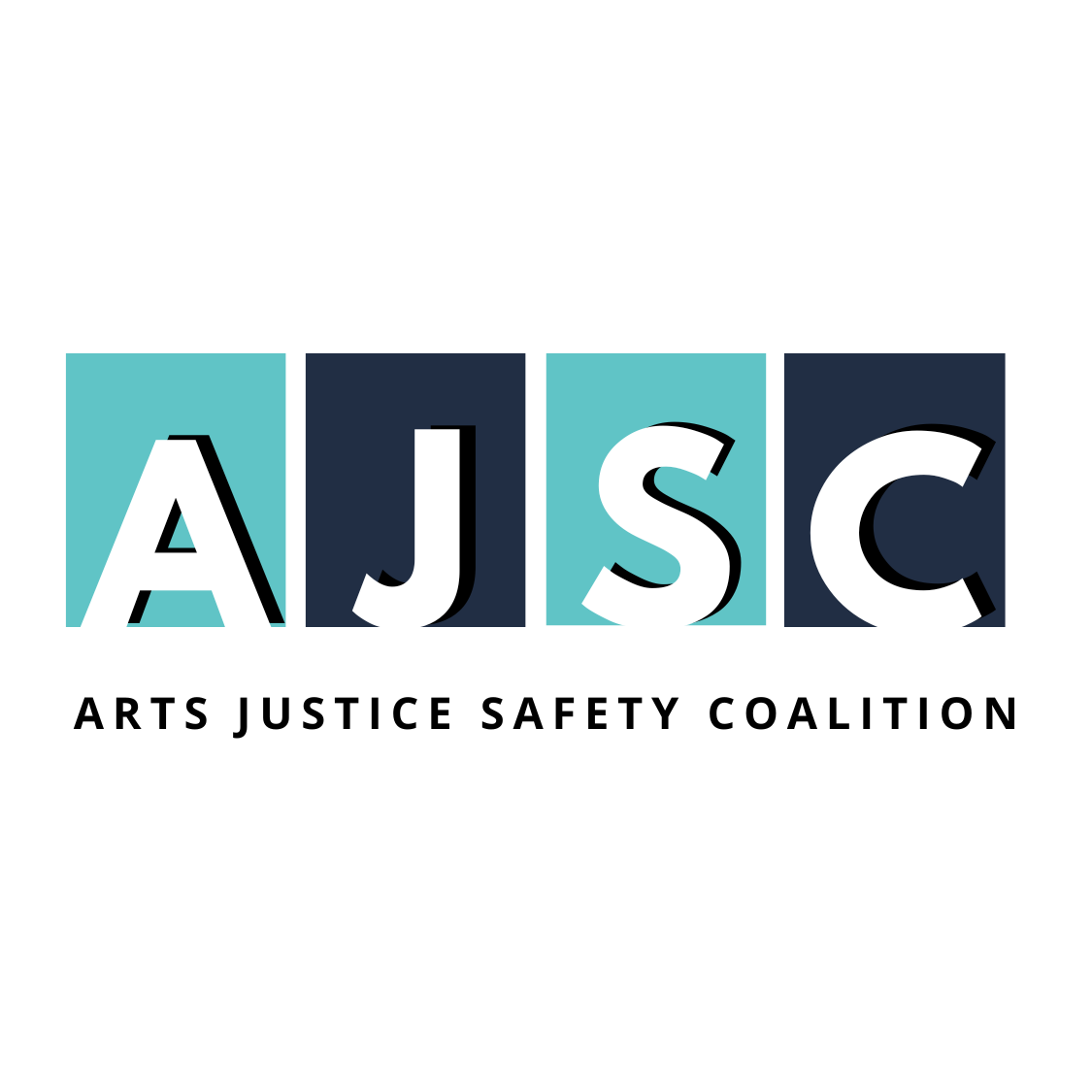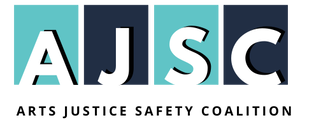Too often, the role of strategic arts engagement as a transformative tool for solution building, entrepreneurship and community safety is overlooked
But, Not Anymore
Executive Summary
The Arts Justice Safety policy goal seeks to advance alternative to incarceration (ATI) possibilities by positioning the arts as a necessary tool in prevention, pre-trial, supervised release, and post-conviction sentencing options by utilizing trauma-informed arts practices to inform public safety strategies and to center the humanity of individuals who are system-impacted. We use the term ‘ATI’ to refer broadly to any intervention that prevents or reduces incarceration or the structural inequalities produced by mass incarceration. Our policy objectives are to diminish the popular narratives and attitudes that drive the punishment paradigm; to foster collective healing through restorative approaches; and to provide capacity-building tools for self-advocacy and entrepreneurship.
AS A COMMUNITY WE PROMISE
To sustain a community of individuals and organizations working at the intersection of art and justice system reform, with a focus on community resilience and prevention through advocacy and reform:
To elevate the status of art as a tool for systemic, cultural, and social change and build power among artists who utilize their work to these ends.
To create lasting change within the criminal legal system by utilizing artists and artistry to identify and demonstrate problems and envision and advocate for solutions.
To persuasively provide evidence to policy makers and funders that investing in the arts is investing in safety (and to make that statement be true by creating the tools that help folks in the field be able to do that.)
To create relationships between artists and arts and justice practitioners to learn from each other, create shared language, tools, techniques, and make “ecosystem” progress as our society works for non-punitive responses to trauma.
To highlight the arts as a professional development and career development tool for currently and formerly incarcerated people and at risk youth.
STRATEGIC ARTS ENGAGEMENT SUMMARIZED
Strategic Arts Engagement serves as a transformative tool for systems intervention aimed at mitigating the impact of poverty within justice-involved communities. Recognizing the overarching goal of systems intervention to shift away from punitive responses, the arts play a pivotal role in offering a holistic approach rooted in evidence-based interventions. By providing justice-involved individuals with access to creativity, technology, and storytelling apparatus, the strategic use of arts contributes to refining educational offerings through professional development and artistic literacy courses. This not only empowers individuals on their journey towards careers in the media and arts but also addresses the complex challenges of poverty by creating avenues for skill development and economic empowerment. Furthermore, by incorporating trauma-informed arts practices into public safety strategies, this approach acknowledges and prioritizes the humanity of individuals impacted by the criminal legal system, promoting restoration, rehabilitation, and a shift towards sustainable alternatives to incarceration. The commitment to justice-involvement emphasis and tailored educational offerings underscores a dedication to cultivating a supportive and inclusive space for both participants and practitioners in the media and arts industry, thereby contributing to broader societal efforts to alleviate poverty within these communities.
COMMUNITY ENHANCEMENT GUIDE BEST PRACTICE USE
Best Practices For Community Enhancement & Alternatives To Incarceration
The Community Enhancement Guide is designed as a comprehensive resource to empower both legal professionals and community organizers in fostering positive change within the criminal justice system. By serving as a bridge between the legal space and community organizing efforts, this guide aims to inform and guide stakeholders towards adopting alternative strategies and options.
INTENDED USE:
Function in Legal Space: Informing the DA's Office
The guide serves as an informative tool for the District Attorney's (DA) office, providing insights into alternative strategies and options beyond traditional punitive measures. By presenting evidence-based practices and successful case studies, it aims to encourage legal professionals to consider and implement restorative approaches in their decision-making processes.
Function in Community Organizing Space: Empowering Communities
In the realm of community organizing, the guide is a valuable resource for community-based organizations, community members, and practitioners. It offers practical insights on utilizing Strategic Arts Engagement (SAE) as a tool to enhance communication and community engagement methods. By highlighting successful applications of SAE in diverse community settings, the guide empowers organizers to integrate creative and effective approaches into their initiatives.
Guide to Shifting Funding: From Punitive to Restorative Approaches
Beyond mere information dissemination, the guide provides a strategic roadmap for stakeholders interested in shifting funding priorities. By showcasing the benefits and efficacy of restorative approaches to safety and harm reduction, it encourages a reconsideration of resource allocation. This section of the guide offers practical steps and advocacy strategies to facilitate the redirection of funds from punitive measures towards restorative, community-enhancing initiatives.
ABOUT ARTS JUSTICE SAFETY COALITION
DESCRIPTION:
The Arts, Justice, and Safety Coalition (AJSC) is a collaborative initiative spearheaded by The Confined Arts (TCA) in partnership with the Phoenix Players Theatre Group, Recess, and Professional Artist Hannah Viederman. Dedicated to fostering a transformative intersection between art and justice system reform, AJSC unites artists, arts organizations, and justice practitioners in the New York and New Jersey Region. Through co-learning, financial support, and amplification efforts, the coalition seeks to elevate art as a powerful catalyst for systemic, cultural, and social change.
COALITION DIVERSITY EQUITY AND INCLUSION:
AJSC is made up of new and existing community-based artists (particularly those with justice involvement), young adults, students, advocates, teaching artists, practitioners, legal advocates, and organizations. The Arts, Justice, and Safety Coalition provides a platform for learning about advocacy, entrepreneurship, community enhancement, and leveraging the arts to counter the impact of the criminal legal system.
COALITION EXECUTIVE STAFF
Isaac I. Scott, Executive Director, The Confined Arts
Bruce Levitt, Projects Manager, Arts Justice Safety Coalition
Hannah Viederman, Projects Manager, Arts Justice Safety Coalition
Shaun Leonardo, Projects Manager, Arts Justice Safety Coalition
COALITION MEMBERSHIP:
AJSC embraces an inclusive free membership model, welcoming individual artists, arts organizations, and educators, including teachers working with children seeking strategies to integrate the arts into classrooms as a tool and intervention for at-risk youth. Our no-strings-attached approach defines two tiers of coalition members. Tier 1 includes those who have actively participated in special projects or public programming events hosted by or in partnership with Isaac’s Quarterly, LLC, or The Confined Arts. Tier 2, comprising registered members, encompasses individual artists or arts organizations who have completed the registration process through the Google form on the AJSC home page.
As a valued coalition member, you gain privileged access to our Monthly Arts, Justice, and Safety Coalition meetings—a vibrant space designed for collaboration, learning, and empowerment. These gatherings nurture our community, offering invaluable tools, resources, and support for artists, arts organizations, and educators dedicated to driving transformative change within the justice system. Elevate your impact, connect with like-minded individuals, and contribute to a more just and empathetic world through the powerful medium of art.
BACKGROUND:
Founded in 2020, AJSC emerged as a response to a Justice-Focused Arts Survey distributed by The Confined Arts in partnership with the Center for Justice Innovation and Conspiring for Good. Recognizing the need for a unified platform, the coalition brings together diverse voices committed to dismantling dehumanizing narratives associated with the criminal legal system. Grounded in empathy and resilience, AJSC empowers individuals and organizations to collaborate, learn, and advocate for non-punitive responses to trauma.
COALITION GOALS AND OBJECTIVES:
Community Resilience and Prevention: Sustain a community at the intersection of art and justice system reform, focusing on advocacy and reform for community resilience and prevention.
Empowerment through Art: Elevate art as a tool for systemic, cultural, and social change, building power among artists committed to using their work for these transformative ends.
Lasting Change within Legal Systems: Utilize artist and artistry to identify, demonstrate, and advocate for creative solutions, creating lasting change within the criminal legal system.
Persuasive Advocacy:Develop evidence to demonstrate to policymakers and funders that investing in the arts is investing in safety, andequipping practitioners with tools to substantiate this claim.
Collaborative Learning: Foster relationships between artists and arts and justice practitioners, facilitating shared language, tools, and techniques for societal change.
COALITION VALUES AND PRINCIPLES:
Inclusive Collaboration: Recognize and invite diverse voices, acknowledging systemic pressures and working collaboratively to dismantle structures that perpetuate competition.
Anti-Oppression: Actively undo systemic oppression through shared leadership, promoting practices that support the entire ecosystem.
Methodology for Creative Production: AJSC employs a trauma-informed methodology through Community Convening Cohorts (CCCs). These cohorts bring together community stakeholders to collaboratively conceptualize, fabricate, and install public art and media. By representing the values and experiences of community members, AJSC aims to change public attitudes about individuals and communities impacted by the criminal legal system and inform more restorative policy solutions.
ARTS JUSTICE SAFETY COALITION POLICY GOAL
Our coalition seeks to advance alternative to incarceration (ATI) possibilities by positioning the arts as a necessary transformative tool in prevention, pre-trial, supervised release, and post-conviction sentencing options by utilizing trauma-informed arts practices to inform public safety strategies and to center the humanity of individuals who are system-impacted.
COALITION POLICY OBJECTIVES
Reduce and replace the popular narratives and attitudes that drive the punishment paradigm,
foster collective healing through restorative approaches and,
provide capacity building tools for self-advocacy and entrepreneurship.
PROJECTS AND INITIATIVES
CLAIMING THE JUSTICE NARRATIVE (2021 - Present)
The Claiming the Justice Narrative (CTJN) performance and creative writing project seeks to support recent incursions in the felony court space by furthering alternatives to incarceration policy shifts. Led by the Arts Justice Safety Coalition (AJSC), powered by The Confined Arts (TCA), this project integrates the arts as a vital tool in criminal justice reform.
1. Process Taken: Beginning in the fall of 2021, twenty system-impacted individuals participated in eight workshops facilitated by teaching artists from Recess Art, Theatre of the Oppressed NYC, Dances for Solidarity, and The Phoenix Players Theatre Group. During these workshops, participants engaged in performance techniques involving movement, improvisation, and autobiographical storytelling. Following these workshops, nine individuals continued to create an autobiographical performance piece through weekly sessions in virtual and hybrid formats. The script developed from these sessions highlights themes of incarceration, early trauma, post-release issues, and the personal histories leading to justice involvement.
2. Film Production: The culmination of this collaborative effort is the short film "Before Time/After Time," which provides a profound look into the lives of nine returned citizens. This film captures fragments of their lives before and after incarceration, exploring turning points and personal histories from childhood to present. It delves into the remorse felt by those who have done harm, their search for redemption, and the struggles of reintegrating into society. The film is a testament to the resilience, compassion, and generosity of its contributors, demonstrating the powerful communities that can be created through the arts.
Funded by a grant from the Art for Justice Fund, a sponsored project of The Rockefeller Philanthropy Advisors.
Additional support provided by: The Society for the Humanities at Cornell University and the JC Flowers Foundation in partnership with Recess, TONYC, The Phoenix Players, Dances for Solidarity, and The Confined Arts.
Before Time/After Time has been screened at the following locations:
Virtual with JAC (Summer 2023)
Arts in Action Festival (Fall 2023)
Virtual Abolition Summit (Spring 2024)
Cornell Cinema (Spring 2024)
3. Community Enhancement Guide: The Community Enhancement Guide is a complementary resource intended for distribution following screenings of the film "Before Time/After Time." This guide serves as a best practice manual for utilizing the arts in community work, aimed at enhancing public safety and fostering healing justice. It is designed to empower both legal professionals and community organizers by offering practical insights into adopting restorative approaches, shifting funding from punitive to restorative measures, and leveraging Strategic Arts Engagement (SAE) for effective community engagement. The guide's outline provides a comprehensive view of its sections, while the executive summary offers a deeper understanding of the project's goals and the broader media and writing initiative.


